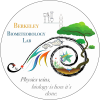Reports
Contents
| Title: | Tonzi Tower - NDVI (SRS, Planet) | ||||||||||||||||||||||||||||||||||||
| Date: | 2017-09-11 - 2021-05-04 | ||||||||||||||||||||||||||||||||||||
| Data File: | TZ_NDVI.csv | ||||||||||||||||||||||||||||||||||||
| Refers to: | TZ,2046503368,1066703767,943103015 | ||||||||||||||||||||||||||||||||||||
|
Various sensors measuring NDVI have been installed across our sites over the last several years. At some sites, the SRS sensors from Decagon/METER have been drifting low, so I wanted to compare them with other NDVI measurements.
I used Joe's datafetch tool to calculate daily average mid-day values of NDVI from the various sensors. Mid-day values included data from 11:00 to 13:00, 5 values a day. I despiked the data in Excel.
Â
NDVIFigure 1. Tonzi Tower NDVI. Both SRS and broadband NDVI seasonal peaks in 2020 are lower than in 2018 and in 2019, while PL NDVI seasonal peak is about the same. Maybe the difference between broadband and PL peaks can be explained by their different sampling areas?  Individual Red/NIR bands  Figure 2. Individual incoming bands of SRS sensor. 650in bad starting 2020 but 810in looks ok.  Figure 3. Individual outgoing bands (hemispherical sensors) of SRS sensor. 650out seasonal peak is lower in 2019/2020 than in 2018. 810out seasonal peak is lower in 2020 than in 2018/2019. Not sure yet if this is real observations or if it's sensor decay.  Figure 4. Individual outgoing bands (field-stop sensors pointed at grass) of SRS sensor. 650out and 810out bands both decrease year after year, but hard to tell if it's real signal or if it's sensor decay.  Red reflectance Figure 5. Red reflectances from SRS and PL data. Grass and PL reflectances reach their annual minimum around the end of April, while the hemispherical SRS reflectance reaches its annual minimum about 4-6 weeks later. Â
Figure 6. Linear regression of red reflectance between SRS and PL data. There are multiple clusters in the regression between hemispherical SRS and PL reflectances, which indicates either 650in or 650out is bad. We know from the timeseries figure that 650in was bad starting early 2020, but it's possible 650out is also bad. Â NIR reflectance Figure 7. NIR reflectances from SRS and PL data. Hemispherical SRS seasonal peaks decrease year over year compared to PL seasonal peaks, which indicates either 810in or 810out is bad. Since the 810in seasonal peaks have been consistent over the past few years (Fig 2), 810out is probably bad starting in 2019, unless we think the difference can be explained by sampled area. Â
Figure 8. Linear regression of NIR reflectance between SRS and PL data. R2 < 40%; poor relationships all around. Â NDVI regressions with SRS (hemispherical)
Figure 9. 2017-2020 data: Linear regression of NDVI between SRS (hemispherical), broadband, and PL data. Messy. Â
Figure 10. 2017-2019 data only: Linear regression of NDVI between SRS (hemispherical), broadband, and PL data. This regression looks cleaner without 2020 data (R2 increased from ~0.23 to ~0.5), but it looks like there's still hysteresis in the relationship. Â
Figure 13. 2017-2018 data only: Linear regression of NDVI between SRS (hemispherical), broadband, and PL data. R2 has increased from ~0.5 to ~0.7, but still have obvious hysteresis. Â NDVI regressions with SRS (field-stop)
Figure 11. 2017-2020 data: Linear regression of NDVI between SRS (field-stop), broadband, and PL data. Also messy. Â
Figure 12. 2017-2019 data only: Linear regression of NDVI between SRS (field-stop), broadband, and PL data. Looks much cleaner without 2020 data (R2 increased from ~0.7 to ~0.92). Incoming SRS data and outgoing grass data should be okay through 2019. |
|||||||||||||||||||||||||||||||||||||
| |

